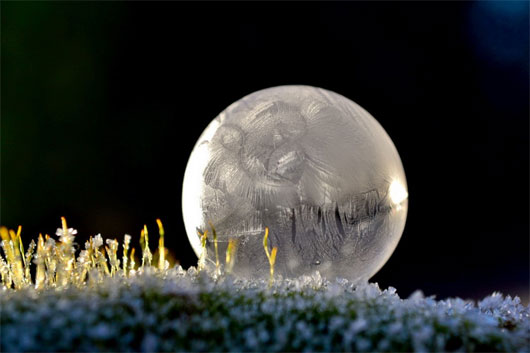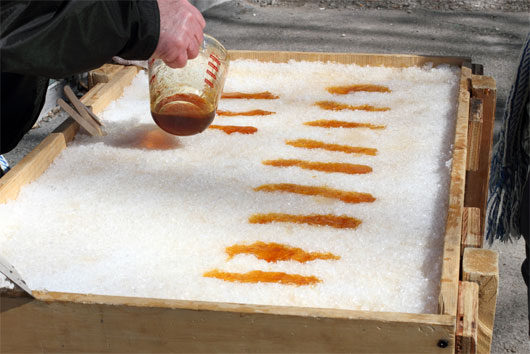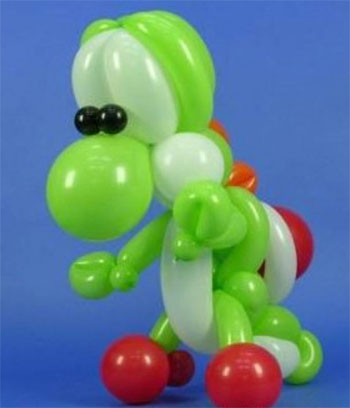5 unique experiments in cold weather
Cold temperatures below negative levels can become ideal conditions for performing unique scientific experiments but are also very dangerous.
1. Frozen bubbles

While the hot weather of summer causes bubbles to quickly dissolve when exposed to air, this is the exact opposite in cold air conditions. When the temperature drops from -9 to -11 degrees Celsius, the bubble will be frozen and shaped like small glass balls. When falling to the ground, some frozen bubbles can crack like eggs. (Photo: Washington Post)
2. Make magic syrup candy

To make syrup candy when the weather falls below -50 degrees Celsius in the US in this record cold, many people who heat avocado and syrup then pour it onto a wooden mold filled with snow. The mixture will quickly harden, be removed from the mold and become a unique ice cream. (Photo: Shutter Stock)
3. Make the balloons expand

This simple experiment was done by inflating the balls, tying them back and bringing them out to the cold. When exposed to cold air, the bubbles will deflect and deflate. However, when brought back into the house, warm temperatures make these balls inflate themselves. (Photo: picstopin.com)
4. Turn boiling water into snow

In weather conditions below 0 degrees in the US, many people tried turning boiling water into snow. According to the researchers, cold air holds less water vapor than hot air, while boiling water expands steam. When boiling water in cold air, the air will hold more water vapor than normal, so water vapor will stick to small particles in the air and crystallize into snow. This test can be done in places with temperatures below -34 degrees C or lower. However, many people suffer burns and are injured when doing this experiment. (Photo: smh.com.au)
5. Blades stick to metal surfaces

When exposed to metal objects in cold air conditions, the exposed blade part adheres to the metal surface and freezes. Because the tongue has a warm temperature, when exposed to cold temperatures, the human body will put all the heat on the tip of the tongue to compensate for heat. The high thermal conductivity of the metal removes a large amount of heat at a faster rate than the body's ability to compensate for heat. The New York Daily News reported that the tongue of a 12-year-old baby in New Hamshire state froze when trying this game. Her tongue was swollen and swollen and it took 6 months to recover. (Photo: Luskfamilydentistry.info)
- America is so cold that sharks have to freeze to death
- Video: Make your own unique scientific experiments
- Cold air intensified, the North continued to be cold from March 1
- The cold price still covers the North despite the sunny afternoon
- How is the cold weather damage?
- Hanoi is cold and cold, showers return
- Cold prices in the US and Canada continue to be complicated
- The north received cold air to strengthen and recur cold weather
- Cold in the Middle Ages is returning to Earth
- Today, cold air landed, throughout the North it was heavy and cold
- Weather today February 9, 2017: The North is cold and cold
- Why is Hanoi and the Northern provinces coldest in the winter this year?
 Is the magnetic North Pole shift dangerous to humanity?
Is the magnetic North Pole shift dangerous to humanity? Washington legalizes the recycling of human bodies into fertilizer
Washington legalizes the recycling of human bodies into fertilizer Lightning stone - the mysterious guest
Lightning stone - the mysterious guest Stunned by the mysterious sunset, strange appearance
Stunned by the mysterious sunset, strange appearance